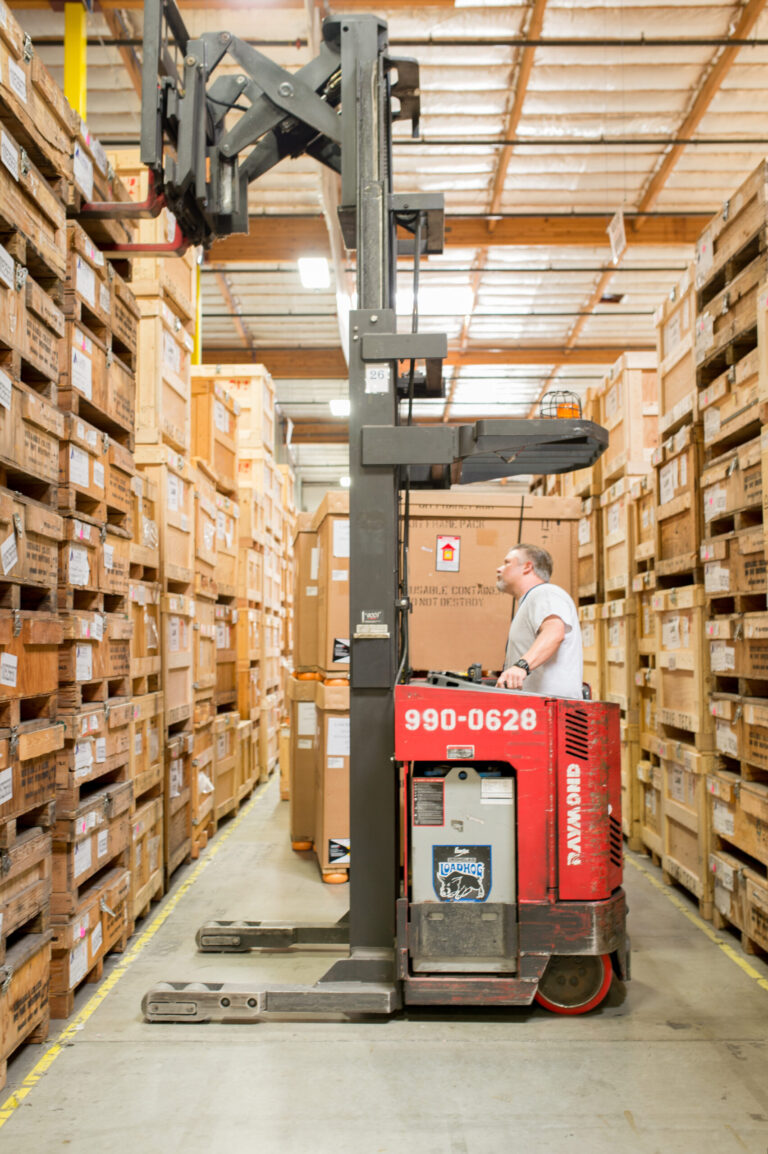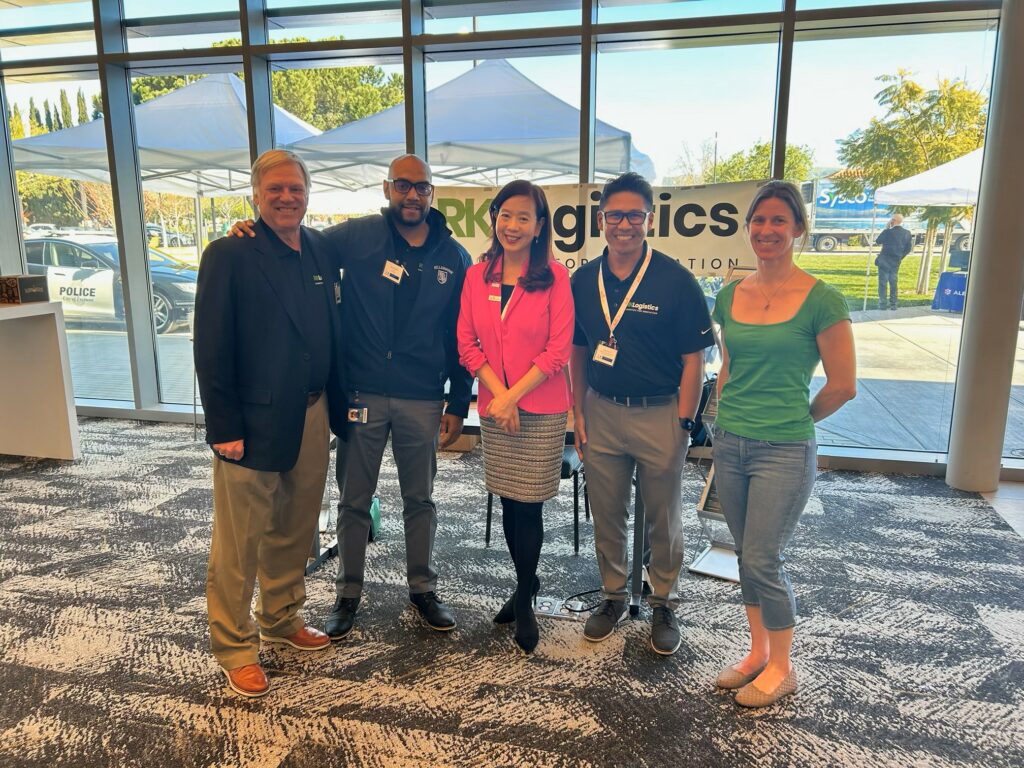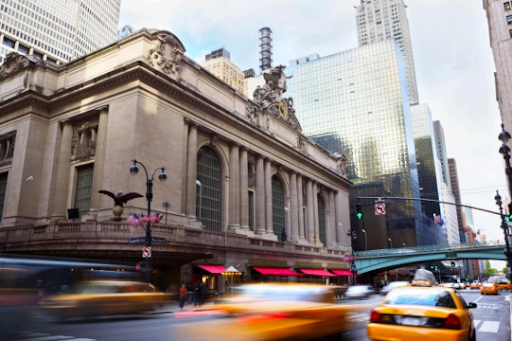Editor’s note: Insights and perspectives from RK Logistics’ Rock Magnan were featured in the June cover story of DC Velocity. You can read the story below, or at this link:
DC Velocity: Parcel Carriers Evolve as eCommerce Explodes
As e-commerce continues to rewrite the playbook for just about every business, parcel express carriers are adapting and innovating in new and different ways, responding to demands from evolving online marketplaces, emerging businesses, traditional retailers, and consumers who want an Amazon- and Uber-like experience when buying and receiving goods.
Consumers increasingly want faster, more flexible, and lower-cost parcel delivery services. They want the ability to manage the entire transaction on their mobile smartphone—from product selection to payment to carrier selection to real-time, up-to-the minute shipment tracking. That’s changing the market for all participants, from small urban last-mile delivery startups like Deliv to regional parcel carriers such as OnTrac, all the way to the industry’s largest and longest-established players—United Parcel Service (UPS), FedEx, and the U.S. Postal Service.
One thing is clear, nobody is standing still. It’s a market that remains ripe with opportunity—and challenges. With e-commerce-generated package and parcel volumes exploding, there is growth opportunity across the board for carriers small and large. And that’s despite Amazon’s continuing to take more of its freight, parcel, and package volumes in-house, deploying its own transportation and delivery network, and upping the ante to one-day delivery of goods purchased by Amazon Prime members on its site.
ON A GROWTH TRAJECTORY
E-commerce continues to radically reshape how both B2C (business-to-consumer) and B2B (business-to-business) companies serve their customers. UPS estimates global e-commerce sales will hit $3.3 trillion in 2019 and more than double to $6.7 trillion in 2025. It cites analyst predictions that global e-commerce, projected to account for 13 percent of retail purchases this year, will grow to 20 percent in 2025. All of which continues to drive package and parcel volume.
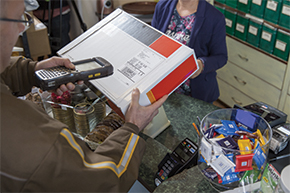
To meet the demand for faster delivery times, UPS has introduced eFulfillment, a program designed for small and medium-sized shippers that sell across multiple marketplaces and Web stores.
“More customers in retail and manufacturing are demanding faster delivery times,” said David Abney, UPS chairman and chief executive, in the company’s first-quarter 2019 earnings call. Among the innovations UPS has introduced recently is UPS eFulfillment, a program that supports SMB (small and medium-sized) shippers that sell across multiple marketplaces and Web stores. The program includes a technology platform that connects users to 21 marketplaces via one UPS login, as well as the physical fulfillment services—storage, order fulfillment, packaging, and shipping—for those orders.
This and other innovations UPS has planned “are about giving our small and mid-sized customers a platform to really punch above their weight,” Abney said in the earnings call. “It allows these smaller businesses to actually compete with larger e-tailers but without having all the infrastructure and the costs that would burden them. It’s a big focus of our SMB imperative,” he added. UPS is actively partnering with e-commerce platforms such as Shopify, Shoprunner, Inexption, and Ware2Go.
FedEx expects the U.S. parcel market alone to double in size to more than 100 million packages per day by 2026, with e-commerce a significant driver of accelerating volumes. “When you view the unprecedented growth opportunity in our industry in the years ahead and the very small number of providers that’ll be able to address the opportunity, it becomes clear why we are optimistic,” says Scott Harkins, senior vice president of customer channel marketing, FedEx Services.
A FLUID MARKET
Competitive market dynamics, the time of day when consumers typically order goods, and their expectations for responsive parcel shipping services all continue to evolve. According to research by marketing data and analytics company Comscore, the majority of online orders are placed after 4 p.m., and 64 percent of shippers expect orders placed by 5 p.m. to qualify for delivery the next day. Another industry report estimated that, on average, retailers that ship from their stores can achieve a 20- to 40-percent increase in incremental e-commerce revenue and a margin increase of 30-plus percent on markdown items.
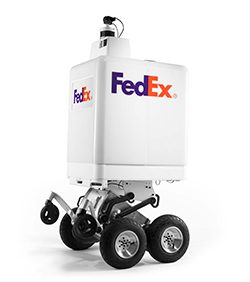
The FedEx is developing the “SameDay Bot” for last-mile, same-day delivery of orders such as pizzas, prescriptions, and auto parts. Pilot testing of the bots is slated for this summer.
It’s a fluid market, and Harkins says FedEx constantly tests and develops solutions to meet shipper needs as online platforms mature and customer demands—such as how and when they want their goods delivered—change. He cited the introduction of the FedEx Extra Hours program and the FedEx SameDay Bot, an autonomous urban delivery vehicle, as two examples.
FedEx Extra Hours enables retailers to fulfill customer orders received in late-afternoon/early-evening timeframes when most online orders are placed. While details can vary by retailer, “generally speaking, next-day delivery via FedEx Extra Hours is a shopping cart option that is available when ordering online,” said a FedEx spokesman. “If the retailer offers FedEx ‘hold at location’ as a shipping option, that location can be selected from the shopping cart at the point of purchase.”
“FedEx Extra Hours is a great example of how we have changed to support brick-and-mortar retail chains in their efforts to fulfill from store[s],” as retailers strive to give shoppers a more seamless physical and digital buying experience, Harkins says. “[It’s] a portfolio of services that allows retailers to accelerate ‘click-to-deliver’ times while also [boosting] their bottom line. By providing later pickup times and utilizing next-day local delivery, retailers can fulfill and deliver online purchases to their shoppers faster than their competition,” he notes.
FedEx Extra Hours is currently available in some 100 large U.S. markets where retailers have requested the service, notes the FedEx spokesman. The company says the program will be expanded to more cities based on customer interest.
For its part, the FedEx SameDay Bot is being developed to “deliver on customer expectations of visibility, convenience, and speed, and answers the call for innovation [in response to] the rise in business-to-consumer shipping,” notes Harkins.
FedEx plans to launch prototype pilot testing of the bots this summer, pending local government approvals. Test cities with which FedEx is in discussions include its hometown of Memphis, Tenn., as well as Manchester, N.H., and Plano and Frisco, Texas.
FedEx has partnered with Manchester-based Deka Research and Development Corp. to design and build the units, which are designed for last-mile, same-day delivery of orders such as pizzas, prescriptions, auto parts, and other small-lot goods. The prototype’s roughly four-cubic-foot compartment can accommodate a variety of goods, including hot and cold items, and is being built with an array of sensors, cameras, and advanced software to help it navigate the multitude of terrains and obstacles encountered in an urban environment. The FedEx bot is designed to travel on sidewalks and along roadsides, safely delivering smaller shipments to customers’ homes and businesses.
FedEx and Deka have engaged with national retailers such as AutoZone, Pizza Hut, Target, Lowe’s, Walgreens, and Walmart for feedback and to identify ways to integrate the technology into operational processes and the customer delivery experience. On average, more than 60 percent of merchants’ customers live within three miles of a store location, demonstrating the opportunity for on-demand, hyperlocal, same-day delivery.
“Last-mile delivery is one of the priciest and most complex parts of the delivery process,” said the FedEx spokesman, who added, “A goal of this technology is to design it in such a way as to reduce those costs.” Once FedEx completes prototype testing and moves into commercial operation, retailers will be able to accept orders from nearby customers and deliver them by bot directly to their homes or businesses.
REDEFINING DELIVERY
As the parcel shipping market continues to evolve, the choices for shippers are becoming more complex. And increasingly, there is a sense of urgency, notes Courtney Rogerson, senior principal analyst, supply chain logistics, at research firm Gartner Inc.
“Shippers and carriers are becoming smarter [and more sophisticated]. You have to know what you are trying to accomplish in the network and align [it] to the best fit of carrier for that goal,” she says. “It’s about knowing your network strengths, gaps, and where different types of carriers can provide value.”
Startup urban delivery carriers do have a place in the mix and are impacting the market to some degree, Rogerson says. “The thing is that with the Big Two, they have a hold on the market because of volume discounts. If you pull away from one of them, then your pricing could change and [parcel shipping] could cost you more.” However, Rogerson notes, there are cases where it makes sense to move some traffic to a niche provider. “If the big carrier cannot make the delivery window or promise and Deliv can, then you go with what will satisfy the customer need,” she says.
One of the areas that Rogerson and her colleagues are thinking about is 3-D printing and the potential future impact on current delivery models. In this scenario, the “delivery” is actually a blueprint or “build” instructions for the product sent via e-mail to the purchaser. The customer downloads the instructions to the 3-D printer in the home or business, where the product is then made to order on-site. “It could disrupt how we [traditionally] define delivery,” she says.
The promise of 3-D printing notwithstanding, parcel delivery for the foreseeable future remains a function of logistics and dealing with the physical movement of goods. Rogerson notes that proximity is still essential to fast delivery. “That’s why brick-and-mortar facilities still have a role to play,” she says. The “nodes” in the network—whether it be a retail outlet, warehouse, parcel shipping store, or freight terminal—that are closer to the end-user can facilitate the shortest delivery time to the customer.
Is there really sustainable demand for same-day delivery? For the majority of common consumer orders, “same-day is not a necessity,” Rogerson notes. She cites multiple surveys that show consumers are willing to pay for same-day delivery but that provide little data on actual use. “Shoppers will make tradeoffs between price, choice, availability, and convenience. It’s increasingly important to offer same-day service as part of that mix,” she says.
A contrarian viewpoint is voiced by Satish Jindel, principal of industry research firm SJ Consulting Group. “It is irrelevant,” he says of same-day delivery. “There is a big difference between waiting for an Uber or Lyft to come pick you up and waiting for a package. [The vast majority] of all the packages coming to people’s homes or businesses … sit on a porch or loading dock. It’s only convenience.”
Business people, he notes, are not spending time monitoring a package’s minute-by-minute progress through its journey. Says Jindel, “You’d probably get fired … for sitting around looking at your cellphone and tracking a package” that has probably a 99-percent chance of arriving when expected anyway.
BLURRED LINES
For logistics firms, the influence of Amazon, the growth of online marketplaces, and the emergence of “crowdsourced” delivery networks are changing how orders are accepted, fulfilled, prepared, and shipped. And in the case of third-party logistics companies (3PLs) that provide fulfillment services, there’s another consideration as well: who that 3PL has to be integrated with in order to share and receive data.
That’s the observation of Rock Magnan, president of Fremont, Calif.-based RK Logistics Group, a leading Silicon Valley 3PL supporting established technology manufacturers, retailers, and startups with warehousing, distribution, and e-commerce fulfillment services.
“The buying experience has changed, and those expectations are spilling over to the delivery experience,” Magnan notes. Whereas once an RK warehouse might pull, package, and organize orders into shipments for the one-time 4 p.m. arrival of the UPS or FedEx truck, now shipments are going out at all times of day with different service providers.
In some cases, the pickups are being made by crowdsourced “on demand” drivers doing essentially freelance delivery work. That means 3PLs have to be much more flexible than in the past. “How orders come to us, how we pick, assemble and pack, then select and notify the carrier, that’s all changing,” Magnan says.
And it’s being enabled by faster wireless technologies, powerful mobile apps, and an emerging class of “delivery network managers.” One example is Roadie, which has gained the support of The Home Depot and Walmart and is providing same-day deliveries of online-ordered home improvement items and groceries, respectively, in select U.S. markets. Roadie deploys a network of crowdsourced drivers and sophisticated software that can direct pickups and deliveries through just about anyone with a GPS-enabled smartphone, a vehicle, and time to make a delivery.
“It’s like ordering an Uber, but instead of delivering a person, it’s a package,” Magnan says. “We get an order, process it, and hit the ship button. Two minutes later, we get a popup message that says Joe in his Ford Escape is two minutes away to pick up the shipment. He arrives, scans the shipment, and off he goes. We get another popup message that the package has been picked up and is projected for delivery at 6:15 that evening. And it could be going to a consumer’s home or to a retail outlet fulfilling product that’s out of stock.”
It’s not just 3PLs who are adjusting. Consumer expectations and technology are creating markets where none once existed. “Who would’ve thought you could get Burger King delivered right to your door, at a cost that’s acceptable?” asks Magnan. “E-commerce, app-based technologies, crowdsourcing, and mobile networks are changing the dynamic of who is a driver, what’s a parcel, and how and when things are delivered.”
ABOUT RK LOGISTICS GROUP — RK Logistics is a premier 3PL provider of full-spectrum, customized supply chain services for the world’s most demanding customers. RK’s manufacturing support, warehousing, order fulfillment and transportation services feature lean practices, ISO-9001 and CA Board of Pharmacy 3PL Certifications, which is unique to a family-owned business. RK Logistics is also a certified minority business enterprise. For more information, go to www.rklogisticsgroup.com

